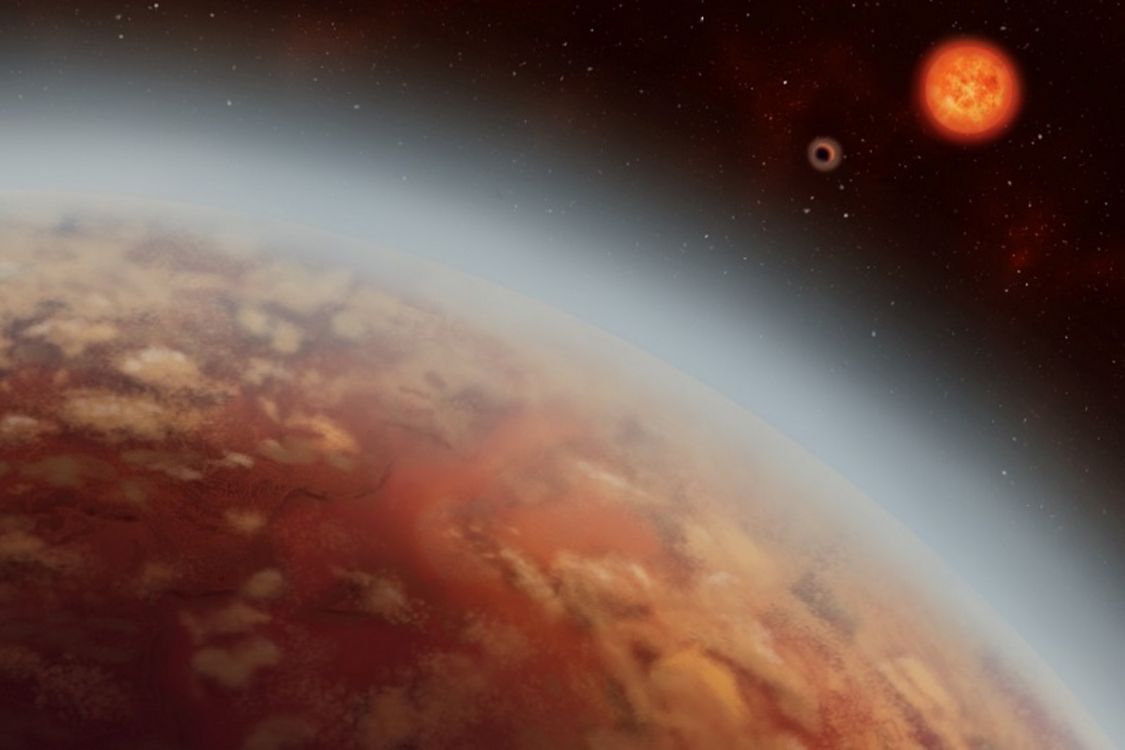Water vapor in the atmosphere of an inhabitable rocky planet
There’s no shortage of water in the universe. Water molecules have even been found in the cold interstellar medium. After hydrogen, water is the second most abundant substance in the atmosphere of hot gas planets. Neptune, Uranus, and their siblings in space are not called ice giants for no reason – they also contain a large amount of water ice.
On rocky planets, water could be a sign of good conditions for life. This, however, would also depend on where the water is located. Researchers already think that some planets have large quantities of water due to their densities. But a deep ocean extending across an entire celestial body wouldn’t be very suitable for life as we know it (and that’s the only form of life that we can talk about with some certainty).
The situation looks quite different if the water exists in a planet’s atmosphere as water vapor and if the planet also has conditions that are otherwise friendly to life. That’s why researchers from the University College in London were so pleased with their discovery published in Nature Astronomy (https://www.nature.com/articles/s41550-019-0878-9). The team was able to detect evidence of water vapor in the atmosphere of exoplanet K2-18 b.
K2-18 b is a rocky planet that was discovered in 2015 and has an orbit in the habitable zone of its star K2-18, a red dwarf located 111 light-years from Earth in the constellation of Leo. In 2017, the High Accuracy Radial Velocity Planet Searcher (HARPS) on the La Silla 3.6-meter telescope of the European Southern Observatory discovered that the planet must be about two-times larger and eight-times heavier than the Earth. K2-18 b revolves around its star once every 32 days and is 0.14 astronomical units from its host. Because K2-18 is so cool, the planet is in the star’s habitable zone, different than its sibling K2-18 c, which is even closer.
At the time, the researchers hoped to be able to study the planet’s atmosphere using NASA’s James Webb space telescope, but astronomers are still waiting for that telescope to be launched. So, the London researchers turned to spectroscopic data from the good, old Hubble telescope to make their discovery. The scientists tried to reproduce the existing data in a computer simulation, but they couldn’t determine what exactly the atmosphere is composed of. The existence of an atmosphere and the presence of water vapor, however, is now certain. One of three scenarios are possible:
- a cloud-free atmosphere that contains H2O and H2-He
- a cloud-free atmosphere that contains H2O, H2-He, and molecular nitrogen N2
- a cloudy atmosphere that contains H2O and H2-He
How much water the atmosphere contains is also still unclear. Depending on the scenario, it could be between 0.01 and 50 percent. Also, what is under the atmosphere is still unknown. It could be a rocky planet – or a water planet with a thick icy crust. The surface temperature of K2-18 b could be between -70°C and +50°C (-94°F to 122°F). Whether it could really be a second Earth is therefore questionable. In any case, inhabitants would first have to be able to cope with the significantly higher force of gravity.
